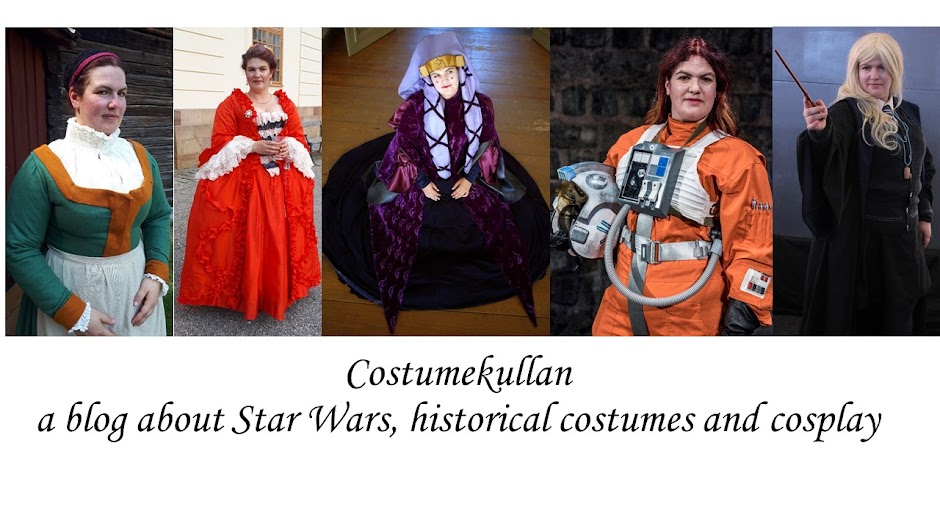It was typical Swedish Midsummer weather as you can see by me and my sister wearing our wool winter shawls over the rest of the costume. My mother isn't wearing her headpiece either because it rained for a lot of the time and she didn't want to ruin it, it's quite a complicated thing out of hay and topped with a very finely pleated piece of fabric.
Since my plan for the HSM Heirloom challenge is to do some alterations on my costume I felt that this would be a good chance to go through some of the history of the costume. By looking at the picture above you can see that my and my my sister are not wearing the same costume as our mother. That is because you usually choose your costume based on the parish that you are from. My family on my father's side can trace our history back to the 14th century in Vika, outside of Falun in Dalarna, so for me and my sisters it was natural to choose the Vika costume. My mother though is from the county of Södermanland and is wearing a costume from Vingåker.
 |
| Costumes from Vingåker, note the headpiece |
| varieties of the Leksand costume, http://www.hembygd.se/tallbergs-byalag/leksandsdrakten/http://www.hembygd.se/tallbergs-byalag/leksandsdrakten/ |
When talking about folk costumes nowadays you usually differ between costumes with an unbroken tradition and reconstructed costumes. An unbroken tradition means that the costume has been in use up until the early 20th century, most costumes are reconstructed ones though. That means that the use of traditional costume disappeared in the 19th century, but when the wave of romantic nationalism swept over Sweden in the early 20th century they were reconstructed to and people started wearing them again. Some costumes were reconstructed, with the help of textile remnants and oral traditions, other were totally constructed out of a general "this would represent our parish"-feeling. I personally am trying to get away from looking down "new" or reconstructed costumes, not the least because many of them date to the 1920's and 1930's and have acquired a history as well, even if it's not as long as the unbroken costumes.
The traditional costumes are mostly associated with Midsummer, but can be worn for all occasions, they are considered formal wear. I've worn mine for example when singing with the church choir at Christmas and to balls when I was a student.
In the next post I'll talk a bit more about my costume.



No comments:
Post a Comment